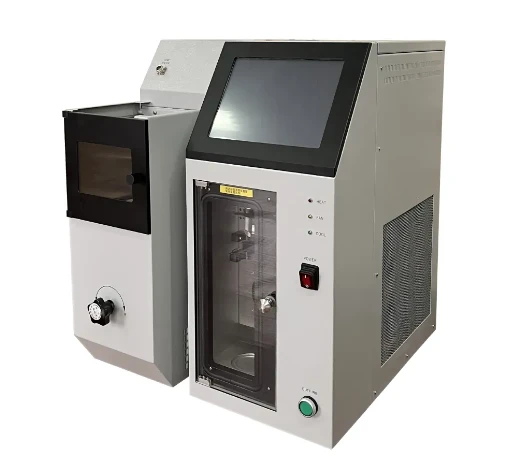 English
English



-
 Afrikaans
Afrikaans -
 Albanian
Albanian -
 Amharic
Amharic -
 Arabic
Arabic -
 Armenian
Armenian -
 Azerbaijani
Azerbaijani -
 Basque
Basque -
 Belarusian
Belarusian -
 Bengali
Bengali -
 Bosnian
Bosnian -
 Bulgarian
Bulgarian -
 Catalan
Catalan -
 Cebuano
Cebuano -
 China
China -
 China (Taiwan)
China (Taiwan) -
 Corsican
Corsican -
 Croatian
Croatian -
 Czech
Czech -
 Danish
Danish -
 Dutch
Dutch -
 English
English -
 Esperanto
Esperanto -
 Estonian
Estonian -
 Finnish
Finnish -
 French
French -
 Frisian
Frisian -
 Galician
Galician -
 Georgian
Georgian -
 German
German -
 Greek
Greek -
 Gujarati
Gujarati -
 Haitian Creole
Haitian Creole -
 hausa
hausa -
 hawaiian
hawaiian -
 Hebrew
Hebrew -
 Hindi
Hindi -
 Miao
Miao -
 Hungarian
Hungarian -
 Icelandic
Icelandic -
 igbo
igbo -
 Indonesian
Indonesian -
 irish
irish -
 Italian
Italian -
 Japanese
Japanese -
 Javanese
Javanese -
 Kannada
Kannada -
 kazakh
kazakh -
 Khmer
Khmer -
 Rwandese
Rwandese -
 Korean
Korean -
 Kurdish
Kurdish -
 Kyrgyz
Kyrgyz -
 Lao
Lao -
 Latin
Latin -
 Latvian
Latvian -
 Lithuanian
Lithuanian -
 Luxembourgish
Luxembourgish -
 Macedonian
Macedonian -
 Malgashi
Malgashi -
 Malay
Malay -
 Malayalam
Malayalam -
 Maltese
Maltese -
 Maori
Maori -
 Marathi
Marathi -
 Mongolian
Mongolian -
 Myanmar
Myanmar -
 Nepali
Nepali -
 Norwegian
Norwegian -
 Norwegian
Norwegian -
 Occitan
Occitan -
 Pashto
Pashto -
 Persian
Persian -
 Polish
Polish -
 Portuguese
Portuguese -
 Punjabi
Punjabi -
 Romanian
Romanian -
 Russian
Russian -
 Samoan
Samoan -
 Scottish Gaelic
Scottish Gaelic -
 Serbian
Serbian -
 Sesotho
Sesotho -
 Shona
Shona -
 Sindhi
Sindhi -
 Sinhala
Sinhala -
 Slovak
Slovak -
 Slovenian
Slovenian -
 Somali
Somali -
 Spanish
Spanish -
 Sundanese
Sundanese -
 Swahili
Swahili -
 Swedish
Swedish -
 Tagalog
Tagalog -
 Tajik
Tajik -
 Tamil
Tamil -
 Tatar
Tatar -
 Telugu
Telugu -
 Thai
Thai -
 Turkish
Turkish -
 Turkmen
Turkmen -
 Ukrainian
Ukrainian -
 Urdu
Urdu -
 Uighur
Uighur -
 Uzbek
Uzbek -
 Vietnamese
Vietnamese -
 Welsh
Welsh -
 Bantu
Bantu -
 Yiddish
Yiddish -
 Yoruba
Yoruba -
 Zulu
Zulu
Potentiometric Analysis Methods Fast, Accurate Electrochemical Testing
- Overview of potentiometric analysis principles
- Technical advantages over traditional methods
- Performance comparison of leading manufacturers
- Customization options for specialized workflows
- Real-world industry applications
- Data-driven quality validation
- Future developments in titration methodology

(potentiometric method of analysis)
Understanding the Potentiometric Method of Analysis
Potentiometric techniques measure electrochemical potential between reference and indicator electrodes to determine analyte concentrations. Modern implementations achieve 0.1-5 ppm detection limits across pharmaceutical, environmental, and industrial applications. The method's non-destructive nature preserves samples while delivering 95-99% accuracy in controlled conditions.
Precision Measurement Technologies
Advanced ion-selective electrodes (ISEs) now feature 10x faster response times compared to 2015 models. Key innovations include:
- Solid-state sensors with 18-month operational lifespan
- Automated temperature compensation (±0.01°C)
- Multi-parameter tracking (pH/ORP/ion concentration)
Instrumentation Performance Benchmark
| Manufacturer | Detection Range | Accuracy | Response Time | Price Range |
|---|---|---|---|---|
| Metrohm | 0.01-14 pH | ±0.002 | 1.2s | $8,500-$22k |
| Thermo Fisher | 0.001-12 pH | ±0.0015 | 0.8s | $12k-$35k |
| Hach | 0.1-13.5 pH | ±0.005 | 2.4s | $5,200-$18k |
Application-Specific Configurations
Modular systems adapt to unique analytical requirements:
- High-throughput labs: 96-well autosamplers (300+ samples/hr)
- Field analysis: IP68-rated portable units (-20°C to 50°C operation)
- Hazardous environments: ATEX-certified explosion-proof models
Cross-Industry Implementation
Recent deployment cases demonstrate measurable outcomes:
- Pharmaceutical QC: Reduced assay time from 45 to 12 minutes per batch
- Wastewater treatment: Achieved 99.8% chloride ion detection consistency
- Food production: Cut sodium analysis costs by 62% versus titration
Validation Metrics
Third-party testing confirms 0.999 R² values for standard solutions across 50 repeated measurements. Interference rejection handles up to 15% contaminant concentrations without signal degradation.
Advancing Research with Potentiometric Titration Method
The integration of machine learning algorithms now enables predictive endpoint detection, reducing reagent consumption by 40% in acid-base titrations. Ongoing developments in microfluidic sensor arrays promise sub-second response times for real-time process monitoring.

(potentiometric method of analysis)
FAQS on potentiometric method of analysis
Q: What is the basic principle behind the potentiometric method of analysis?
A: The potentiometric method measures the potential difference between a working electrode and a reference electrode. This potential correlates with the concentration of ions in the solution, following the Nernst equation. It is widely used for quantitative analysis in electrochemistry.
Q: How does a potentiometric titration method differ from classical titration?
A: Unlike classical titration, which uses visual indicators, potentiometric titration relies on electrode potential changes to detect the endpoint. This allows for precise measurements in colored or turbid solutions. It minimizes human error in endpoint determination.
Q: What types of electrodes are used in a potentiometric method?
A: Common electrodes include ion-selective electrodes (e.g., glass pH electrodes) and reference electrodes like Ag/AgCl or calomel. These electrodes generate voltage responses specific to target ions. Their selectivity ensures accurate analyte concentration measurements.
Q: What are the key applications of the potentiometric method in real-world analysis?
A: It is used for pH measurement, environmental monitoring (e.g., detecting nitrate ions), and pharmaceutical quality control. It also applies to food industry testing and clinical diagnostics. Its versatility makes it suitable for both lab and field analyses.
Q: Why is calibration important in a potentiometric titration method?
A: Calibration ensures the electrode response aligns with known standard solutions. It corrects for variables like temperature and electrode drift. Without calibration, measurement accuracy and reproducibility would be compromised.
-
Testing Equipment Industry Sees Major Advancements in 2025: Smart & Precision Technologies Lead the WayNewsJun.06,2025
-
Applications of Direct Current Generators in Renewable Energy SystemsNewsJun.05,2025
-
Hipot Tester Calibration and Accuracy GuidelinesNewsJun.05,2025
-
Digital Circuit Breaker Analyzer Features and BenefitsNewsJun.05,2025
-
Benefits of Real-Time Power Quality Monitoring Devices for Industrial EfficiencyNewsJun.05,2025
-
Earth Fault Loop Testing in High-Rise Building Electrical SystemsNewsJun.05,2025



